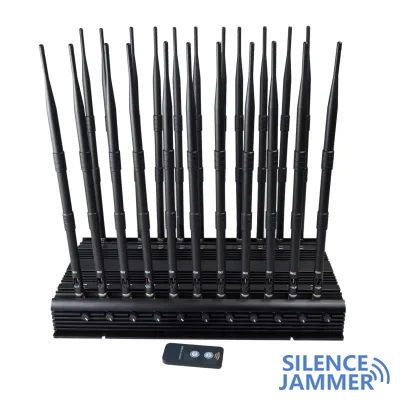Post
With the increasing problem of illegal cell phone use in prisons, prison signal jammers have become a key tool in combating such problems. cell phone jammer However, there is an ongoing debate about whether these devices will affect communications in neighboring communities.GPS jammer This article will explore the working principles, technical details, and potential impacts of these devices on the community.
I. How Signal Jammers Work
Basic Definition of Signal Jammers: Jammers shield or block wireless communications within a specific range by emitting interference signals.signal jammer
Mechanism of Frequency Interference: These devices emit radio waves in the same frequency band as mobile phone communications, disrupting communication signals and thus preventing illegal cell phone use in prisons.
Directional Antenna Technology of Jammers: The use of directional antennas allows interference signals to be precisely targeted to prison areas, thereby avoiding unnecessary impacts on communications in surrounding communities.

II. Application of Signal Jammer Technology in Prisons
Technological Advances and Application Needs: Modern prisons increasingly rely on signal jamming technology to reduce criminal activities conducted through mobile phones, such as drug trafficking and extortion.
Precise Signal Coverage: By using advanced antenna technology, signal jammers can limit the impact range to within the prison, preventing interference with the communications of neighboring residents.
Case Study: Jammer Project in Chilean Prisons: Chilean Justice Minister Luis Cordero confirmed that the country's prisons have begun installing signal suppressors to reduce crime, but the project is still in the debugging stage.
III. Impact and Concerns on Surrounding Communities
Risks of Improper Technical Design: If the signal jammer is not installed properly, it may cause the jamming signal to overflow the prison range, thereby affecting the telephone and Internet communications of nearby residents.
Scholars' Opinion: Claudio Valencia, a scholar from the Department of Electrical Engineering at Usagh, pointed out that if the design and installation are reasonable, the jammer will not affect the communication of neighboring communities. The signal can be precisely controlled through directional antennas.
Challenges in Practical Application: Jorge Sandoval of the University of Chile added that the use of directional antennas can reduce interference in the community, but this also requires the design, installation and maintenance of the equipment to meet high standards.

komentarze









